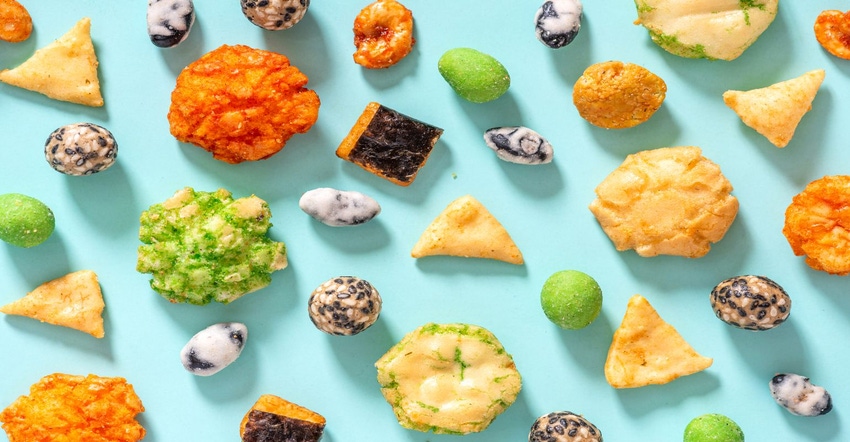Snacking remains a poorly defined and understood eating occasion, even though most Americans across age groups consume a significant portion of their daily energy as snacks.

The concept of three meals a day is an increasingly antiquated notion. Modern-day consumers are grazers and snackers. This perpetually harried populace frequently eats meals on the go. Eating several smaller-portion meals daily is the trend of the 21st century that most food industry experts agree is not going away.
Understanding the variety of snack foods people favor—as well the snackers themselves—is a surefire way to gain greater insights into the U.S. consumer spectrum. The key is figuring out the next trends, particularly after the global pandemic; the landscape has become vastly different, with health-conscious consumers driving innovation and development in the sector.
According to “Snack Food Global Market Report 2020-30: COVID-19 Impact and Recovery” from Research and Markets, the global snack food market grew from US$210.4 billion in 2019 to $215.9 billion in 2020, at a compound annual growth rate (CAGR) of 2.7%. The low growth is mainly due to economic slowdown across countries owing to the COVID-19 outbreak and the measures to contain it. The market, however, is expected to recover and grow at a CAGR of 7% from 2021, to reach $264.8 billion in 2023.
In a report with projections spanning 2019-2025, Grand View Research valued the global snacks market at $439.9 billion in 2018, with a CAGR of 6.2% from 2019 to 2025.
And with its take in “Snack Food Market - Growth, Trends, Covid-19 Impact and Forecasts (2021 - 2026),” Mordor Intelligence placed the global snack food market at $427.02 billion in 2020, with an anticipated CAGR of 3.37% from 2021-2026.
Discrepancies regarding market size may have something to do with what’s considered a snack. The definition can vary among countries or even by generation. Snacking remains a poorly defined and understood eating occasion, even though current cross-sectional data from USDA’s Agricultural Research Service (ARS) via “What We Eat in America” suggest that most Americans, including children and adolescents, consume a significant portion of their daily energy as snacks. In fact, one study indicated snacks compose almost a quarter of people’s daily energy (Glob Pediatr Health. 2017;4:2333794X17698525).
The above excerpt is from the article titled “Innovations in the nutritional value of snacks,” in the “Innovation in the healthy snack space” digital magazine. Click the link to access it.
Maggie McNamara is the marketing director for Gencor. She is a veteran brand and marketing strategist who has worked with multimillion-dollar companies to grow their brand value and increase market share. After spending over a decade working with companies like BMW, P&G, Bavaria Brau, Jacuzzi and Silicon Graphics, McNamara ran a successful marketing agency and a growing a clothing line. She holds a bachelor’s degree in communications and multimedia, an honors degree in marketing communication and a master’s in organizational communications from the University of Johannesburg, South Africa.
About the Author(s)
You May Also Like






